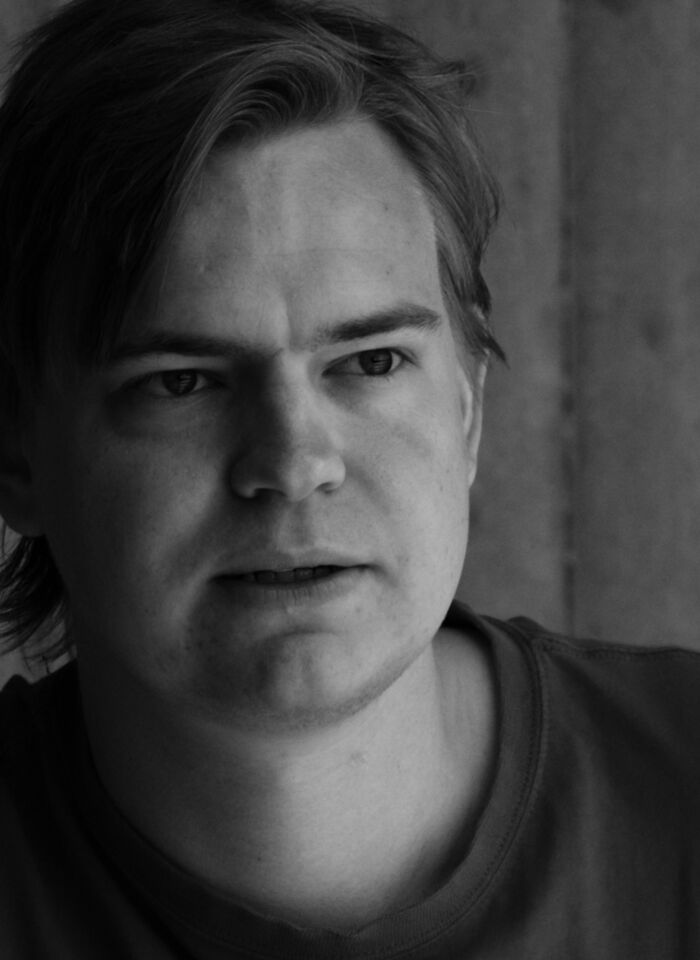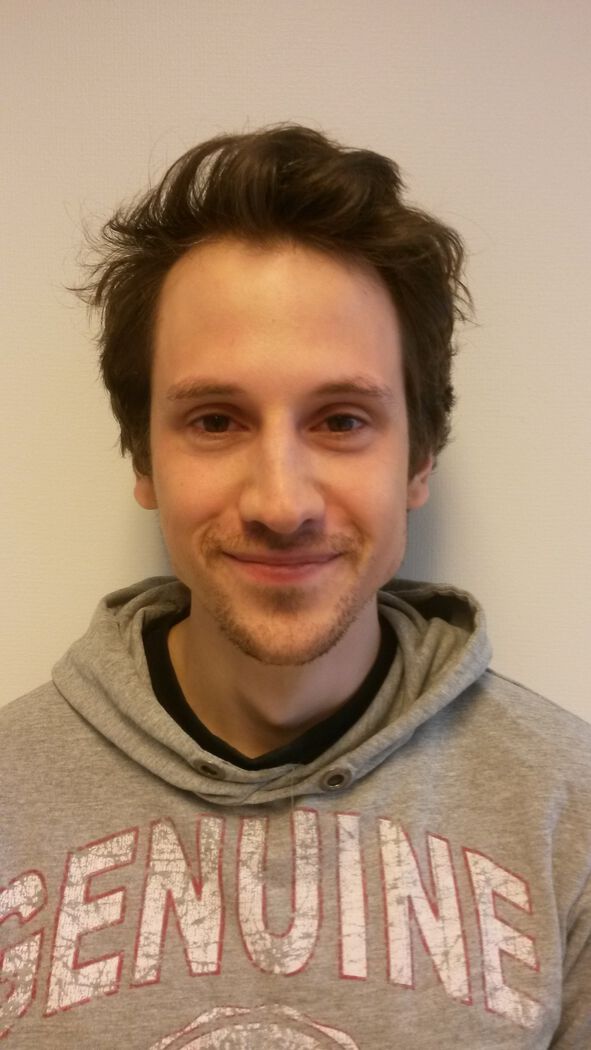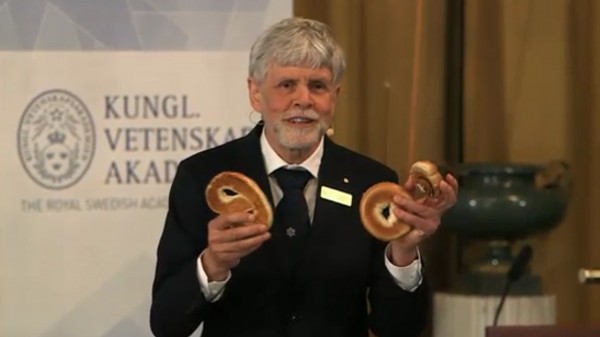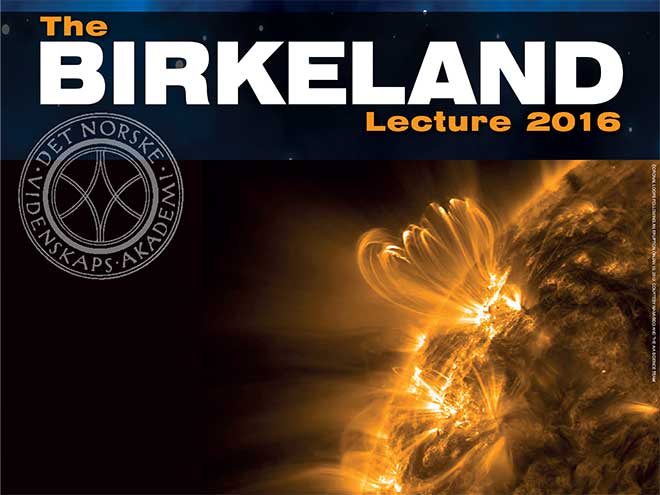Tidligere arrangementer - Side 25
Jens Chluba, University of Manchester
Since the measurements with COBE/FIRAS in the mid-90's we know that the CMB spectrum is extremely close to a perfect blackbody. There are, however, a number of processes in the early Universe that should create spectral distortions at a level within reach of present day technology. I will give an overview of recent theoretical and experimental developments, explaining why future measurements of the CMB spectrum will open up an unexplored new window to early-universe and particle physics, with possible non-standard surprises and several guaranteed signals awaiting us. I will highlight the complementarity of the distortion signals and the CMB anisotropies, illustrating how future distortions measurements could shed new light on different inflation models.
(The slides will be available here)
Master in Physics Alexander Hupfer at Department of Physics will be defending the thesis Hydrogen related point-defects in mono-crystalline zinc oxide for the degree of Philisophiae Doctor.
Doctoral candidate Master in Physics Alexander Hupfer at Department of Physics will give a trial lecture on the given topic: Solid state lightning
Jan Olav Eeg, FI
The existence of an electric dipole moment (EDM) of an elementary particle is a quantity which violates time reversal (T-) symmetry. Trusting the CPT-symmetry valid in all local quantum field theories, EDMs are also CP-violating quantities. Therefore studies of EDMs give important information on the matter anti-matter asymmetry in the universe. Within the Standard Model (SM) of particle physics, EDMs are small and given by (higher) loop effects and through the Cabibbi-Kobayashi-Maskawa (CKM) CP-violating phase. Experimentally only bounds on electron, muon, proton and neutron EDMs are determined. Theories beyond the SM typically contain more sources of CP-violation than the SM. Therefore calculations of EDMs within such theories will put bounds on the parameters of such (hypothetical) theories. [continued below]
(The slides will be available here)
Telemetry data logger for medium and large caliber ammunition
Master of Science Jørgen Høgberget at Department of Physics will be defending the thesis Microscopic Modeling of Confined Crystal Surfaces: Growth, dissolution, and equilibrium for the degree of the Degree of Philosophiae Doctor
On Thursday you are all invited to come and hear about the CERN-MEDICIS project. The leader of the project, Thierry Stora, is visiting and will present the project in Origo from 12:15 - 13:00 on Thursday 19/1. The presentation should be interesting to anyone curious about medical applications of radioisotopes.
Doctoral candidate Master of Science Jørgen Høgberget at Department of Physics will give a trial lecture on the given topic: "Numerical investigations of percolation problems"
Farinaldo Queiroz, MPI Heidelberg
We review the searches for dark matter namely, direct, indirect and collider, emphasizing the importance of complementary strategies and discuss how one can eventually unveil the nature of dark matter.
(The slides will be available here)
A Parallel Multigrid Poisson Solver for PINC, a new Particle-in-Cell Model
Radiosensitivity of cells in different layers of HT29 multicellular spheroids irradiated with x-rays
A Survey of DDS Implementations for RIMFAX
Design of CMOS image sensor with high linear amplifier
Alessandro Cuoco, RWTH Aachen
I will discuss the implication for dark matter (DM) indirect searches of the recent precise measurements of cosmic-ray (CR) antiprotons from AMS-02. With respect to previous works we use a new updated CR propagation model consistent with the AMS-02 data. Furthermore, we fit at the same time, in a self-consistent way, both DM and the propagation parameters. We find a significant (4.5 sigma) indication of a DM signal for DM masses near 80 GeV, which, interestingly, is also compatible with the similar excess present in the Galactic center in gamma rays. Possible systematic effects will be also discussed. In terms of DM exclusion limits, we find stringent constraints a factor of 4-5 stronger than limits from gamma-ray observations of dwarf galaxies.
(The slides will be available here)
Microsystem for characterization of thermoelectric materials
Exploring Naturalness in Supersymmetry at the High-Luminosity Large Hadron Collider
Phosphites in Atomic Layer Deposition Synthesis and Characterisation Using Unconventional Phosphorous Precursors
Making SUSY Natural Again - Investigating the Naturalness Reach of the International Linear Collider
Effect of amorphous Si buffer layer on the ZnO/Si interface
"Strings, loops and noncommutative geometry - Three roads towards unifying gravity with quantum mechanics and explaining the standard model"
Speaker: Vadim Makarov. Institute for Quantum Computing, University of Waterloo, Canada.
Julia Harz, UPMC Paris
To achieve a more precise prediction of the supersymmetric dark matter relic density, we have calculated next-to-leading order SUSY-QCD corrections to neutralino (co)annihilation processes including Coulomb enhancement effects. We demonstrate that these corrections can have significant impact on the prediction of the dark matter relic abundance and are thus of general interest for parameter studies. For particle physics observables at colliders, it has been common practice for many decades to estimate the theoretical uncertainty by studying the variation of the predicted cross sections with a priori unpredictable scales. In astroparticle physics, this has so far not been possible, since most of the observables were calculated at Born level only, so that the renormalization scheme and scale dependence could not be studied in a meaningful way. We will present the first quantitative study of the theoretical uncertainty of the neutralino dark matter relic density from scheme and scale variations.
(The slides will be available here)
Self-assembly & Surface Properties of Peptides and Peptidomimetic Polymers
Marit Sandstad, NORDITA Stockholm
The idea that black holes of a wide range of masses could form from highly overdense regions in the very early universe has been around since the early seventies, when it prompted Steven Hawking to derive the theory of Hawking radiation. Since then, no primordial black holes have been seen, but as more accurate observations of the universe and our surrounding galaxies have been made they have been suggested as possible culprits for unexplained cosmic rays, the supermassive black holes in the centres of galaxies or the entirety of dark matter. However, as the unexplained cosmic rays turned out to be non-detections, so far all we have got at present are constraints on their abundance from various observations across nearly all possible scales. However, having only constraints might not be entirely a disadvantage. If the mechanisms proposed for the formation of primordial black holes is correct, their non-existence implies that the primordial power spectrum from inflation cannot have been too large. This is very interesting as... [abstract continued below]
(The slides will be available here)
Taran Paulsen Hellebust, OUS/Radiumhospitalet and Dept. Physics, UiO
I anledning professor Carl Angells 70-årsdag inviterer vi til
FYSIKKDIDAKTIKK-SYMPOSIUM
Tid: 18. november kl. 10.00-15.30
Sted: Store fysiske auditorium, Fysikkbygningen, Blindern
Ingerid Skjei Knudtsen, OUS/Radiumhospitalet and Dept. Physics
Numerical modelling of plasma-spacecraft charging effect by using particle-in-cell method
Ilektra Kalaitzidou, Department of Physics, UiO
Master i fysikk Trine Wiborg Hagen ved Fysisk institutt vil forsvare sin avhandling for graden ph.d: "Lifetime measurements in fission fragments - a study of the nuclear shape transition from axial to triaxial deformation".
Jeriek Van den Abeele, FI
Given that physical problems rarely have exact solutions, the importance of perturbation theory can hardly be overstated. Yet often, a closer look reveals that it is divergent and ill-defined! Non-perturbative effects, ubiquitous in nature and quantum theories, have to be accounted for explicitly in attempts to make sense of perturbation theory. The perspective of the resurgence framework leads to new ways of understanding perturbative expansions and reveals surprising connections to non-perturbative physics. In this talk, I will illustrate how resurgence manifests itself in the quantum mechanical context of a cosine potential, emphasising the importance of quantum tunnelling for its energy spectrum and highlighting how non-perturbative contributions are intricately encoded in perturbation theory.
(The slides will be available here)
Azadeh Abravan, Department of Physics, UiO
Formulation and Characterization of the Metal-Organic Compound UiO-66
Tommaso Dorigo, INFN Padua
The CDF collaboration led for two decades the investigation of the high-energy frontier in the search for new physics at the highest energies until then achieved, provided by the Tevatron collider. In a recently published book the author describes how the experiment handled several unexplained phenomena found in the data, and the complex sociology of a large collaboration divided by different feelings on how to deal with those unexpected findings. The seminar will start by discussing the history of those anomalies and their resolution, and then focus on the statistical problem of defining a proper discovery level for new phenomena and on the non-trivial issues it entails.
Sebastian Wild, DESY Hamburg
One of the most promising strategies to probe WIMP dark matter is direct detection, i.e. the search for nuclear recoils produced by the elastic scattering of dark matter particles. After giving a general introduction to the theoretical framework and experimental status of direct detection, I will present recent developments which allow to interpret the experimental data without the need to specify the (unknown) velocity distribution of dark matter, called "halo-independent methods". Specifically, I will discuss to what extent future experiments can pinpoint the particle physics properties of dark matter in a halo-independent way. I will also present a novel approach to derive upper limits on the scattering cross section of dark matter using already existing experiments, again without the need to specify the velocity distribution.
(The slides will be available here)
Eirik Malinen, Department of Physics, UiO
Master i fysikk Kyrre Ness Sjøbæk ved Fysisk institutt vil forsvare sin avhandling for graden ph.d: "Avoiding vacuum arcs in high gradient normal conducting RF structures."
A Study for Coupled-Cluster Methods for Infinite Matter
Master of Science Marcel Moura ved Fysisk institutt vil forsvare sin avhandling for graden ph.d: "Burst Dynamics in Quasi- 2D Disordered Systems: Experiments on Porous Media Two- Phase Flows".
Anastasia Sokolenko, FI
In this work we propose a new interesting channel for searching new physics at the LHC. This channel is connected to the diphoton channel via electroweak gauge symmetry of the Standard Model (SM). We discuss the possibility that an apparent diphoton signal is in fact produced by the 4-photon channel, where a pair of collimated photons is misidentified as 1 photon due to finite angular resolution of the detector. In this case we expect that the gauge symmetry of the SM connects the diphoton channel to three boson channels. Also we notice that the same mechanism could give an experimental signature of $Z\rightarrow \gamma\gamma$ decay, which is theoretically forbidden by the Landau-Yang theorem. For definiteness we illustrate these ideas using one of the models that was discussed to explain the recent 750 GeV resonance, even if the later signal was not confirmed.
(The slides will be available here)
Jens Paaske, NBI Copenhagen
Motivated by recent experiments, we study lattices of magnetic adatoms exchange coupled to the surface of a conventional s-wave superconductor. We show that a variety of collective magnetic and electronic phases emerge in this system, due to the interplay between ferromagnetism and superconductivity. In particular, an adatom chain on a bulk (2d or 3d) superconductor can order into a magnetic spiral state leading to, and stabilized by, the opening of a topological superconducting gap within the band of YSR states induced by the adatoms. The spiral wave-vector increases sharply as the YSR energy is lowered from the quasiparticle continuum, due to a strong spin-spin exchange interaction mediated through the band of sub-gap YSR states. As the YSR band enters the topological phase, the wave-vector exhibits a peak and is thereafter driven down towards ferromagnetism due to YSR state double-exchange. We provide the range of YSR energies and adatom spacing where these phases exist for adatoms on a 3d, or 2d superconductor. The magnetic ordering within a 2d YSR lattice is also explored.(The slides will be available here)
Professor Eric Priest, St Andrews University, Scotland:
Our Dynamic Sun
Oleg Lebedev, University of Helsinki
I will discuss a special role of the Higgs boson in probing the hidden sector and its connection to dark matter and inflation.
(The slides will be available here)
David Wiedmer, Dept. Oral Biology, Faculty of Dentistry, UiO









